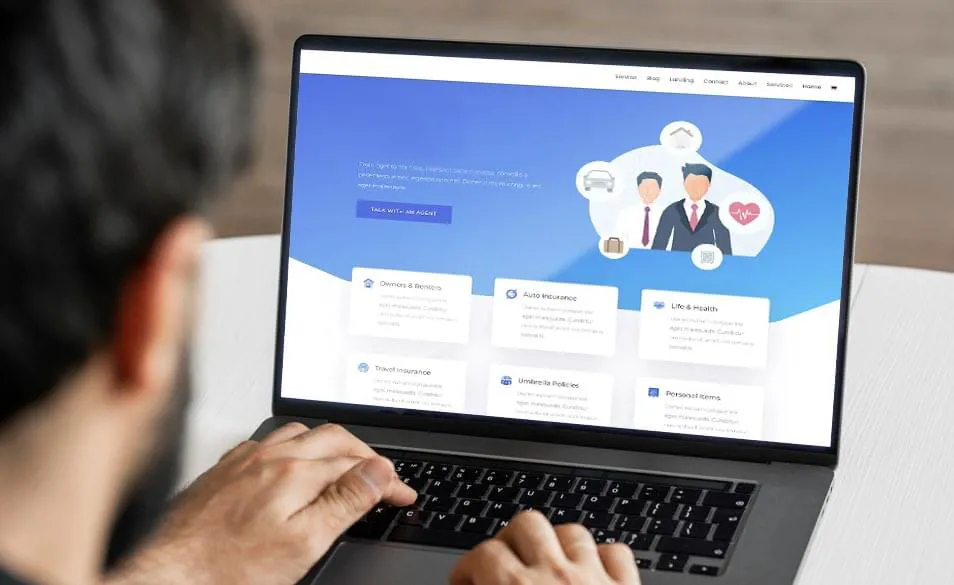How we enabled data visualisation in insurance
We helped one of the leading insurance broking companies build a broker data engine that centralizes their information in a single location.

The client is an industry leader in insurance broking, risk management, underwriting, and claims consulting services, providing a range of specialist insurance solutions. They aim to fuse innovative technologies and deep industry expertise to drive client success. With over $10 billion of premiums placed worldwide each year, they are trusted worldwide and are growing each day.
The challenge: making it easier to utilize data for brokers
In the insurance sector, massive amounts of data are created and collected every day. However, getting the most out of this data to make smarter business decisions is not easy. That’s the problem our client aims to solve.
That is why they created a broker data engine that brings together approximately 20 different applications. Those applications collect, process, and present data in a specific way to support their clients’ business decisions.
Their databases store data about different clients, projects, market shares, industries, and insurers. This data is divided into over 400 business units. The main purpose of their platform is to collect, transform, analyze, and display data from all those sources in the form of indicators. That way, all users can access critical information faster and make wiser business decisions based on it.
Initially, the project was intended only for internal users. Over time, some applications started to be used externally. Our goal was to enable their external use and, in that way, make the development and maintenance of this project self-sustaining and profitable.
The team: Vega IT as an extension of the client’s in-house team
The client already had a digital product that was working well. What they needed was an extension of their in-house team that would provide them with the technical know-how. They were looking for experienced software developers with strong technical skills and deep industry experience to maintain the platform and implement new features.
We played multiple roles on the project, including business analysis, full-stack development, back-end development, and front-end development. We also provided them with continuous technical support whenever required.
In addition to technical skills, deep industry knowledge was also required. Understanding industry terminology. Keeping pace with the latest legislative norms and regulations in a highly regulated insurance sector. Knowing how the ecosystem lives and breathes. Those are just some key factors required for software development and maintenance. And, that is where Vega IT stepped in. Our 15-year experience in insurance helped us successfully create new features and fix production bugs.
The solution: centralizing multiple applications within a single platform
The client’s operations are based on Lloyd’s principles (a business model that represents a set of 13 principles). These principles set out the fundamental responsibilities expected of all managing agents in order to support the markets’ overall performance, capital strength, as well as financial and reputational credibility.
One of the problems we faced was figuring out how to get all the data into a common data source that multiple applications would use. To accomplish this, we decided to use the ETL (Extract, Transform, Load) process:
- Extracting data from its sources
- Transforming data by deduplicating it, combining it, and ensuring quality, and then
- Loading data into the target database
We used SQL for data extraction and transformation and stored the final processed data on the SSAS (Microsoft Analysis Service) database. The SSAS database allowed us to constantly update the data through various scripts and thus have up-to-date data.
One of the crucial challenges in the project was to find a way to pull data from the Analysis Service. To achieve this, we decided to use the DAX (Data Analysis Expressions) query language, which allowed us to manage and filter the processed data and send it to the UI.
We created various tables, graphics, charts, and maps to display the data as simply as possible. To achieve the aforementioned, we used various libraries that Angular offers, such as ag-grid, Highcharts, etc.

Data Visualisation in InsurTech
Results: Easier data utilization. Improved decision-making.
Easier data entry and visualization
By reducing the various data sources to one, we made their entry and display much easier. The unique source enabled us to divide data consumption through various abstractions into units (separate applications).
Enhanced application performance
Given that processing (sorting, formatting, elimination, etc.) requires a significant amount of resources, the use of different caching methods (client and server) raised the performance of the applications to a significantly higher level.
Understanding user needs. Presenting data in a more precise way.
To make the applications self-sustaining, the initial goal was to acquire external users. Therefore, tracking technologies such as Application Insights and Google Analytics allowed us to follow users' needs in detail.
Thanks to that, we were able to present the data in a more straightforward way, which caught the users' attention. That further helped develop different roles depending on the users' needs.
Simpler user authentication
Through AAD (Azure Active Directory), we have control over user authentication on all our applications. Also, we can control user access (authorization) to different parts (modules) of our applications and their pages. This principle also makes authentication easier for our users.
Improved operational efficiency
As we worked on the system where we aggregated data sources consumed from more than 20 applications (projects) and development teams, we raised our teamwork, cooperation, coordination, and whole development process to a higher level.
The tech stack:
Server-side
- SSAS (Microsoft SQL Server Analysis Services)
- DAX
- SQL
- C#
- NET Core
- Redis
Client-side
- Angular with TypeScript
Infrastructure
- Microsoft Azure


